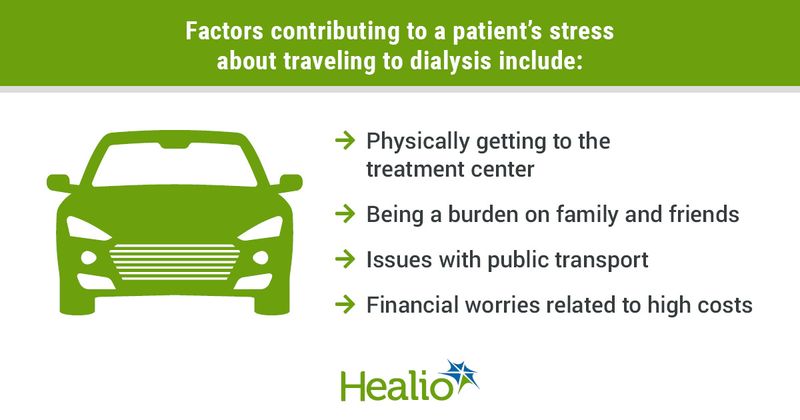Travel to treatment remains a source of stress, barrier for patients on dialysis
Patients who receive dialysis report that traveling to dialysis facilities remains a source of stress and a barrier to treatment, according to data published in Kidney Medicine.
“Issues related to transportation to and from in-center hemodialysis facilities frequently challenge patients and can adversely affect their experiences of health care and quality of life. However, there are limited studies that examine this issue among contemporary hemodialysis patients,” Rachel A. Lewis, PhD, from the department of medicine at the University of Calgary, and colleagues wrote. “The purpose of this research is to identify and better understand the current options for transportation to and from hemodialysis facilities and to describe stakeholder experiences.”

Using a qualitative descriptive design, researchers developed the Patient interest in Kidney Services (PiKS) group to create a forum for people using and providing hemodialysis in Canada. Through the forum, the PiKS group aimed to get users to identify and address aspects of hemodialysis that need improvement, specifically experiences related to transportation. The group consisted of eight to 11 participants who met monthly for 18 months to research and create the forum.
Eventually, an open forum workshop was held and included six focus groups with 45 participants (37 were patients and family members, one was a social worker, three were PhD candidates, one was a researcher and three were nurses.) Further, researchers conducted a survey of eight renal social workers to gain perspectives on transportation for patients and asked the following questions:
- How do patients travel to dialysis if they are unable to drive themselves?
- How much does this cost them?
- Who provides the transport?
- How is it funded?
Using conventional content analyses, researchers identified themes among group members.
Analyses revealed traveling to and from dialysis facilities was a main source of stress and anxiety for patients and family members. Factors that contributed to those feelings of stress included: the challenges of physically getting to the treatment center, particularly in adverse weather conditions; being a burden on family and friends; difficulties accessing the treatment facility; issues with public transport; and financial worries related to high costs.
Researchers referenced some solutions health care systems have explored to improve access to transportation. These included interagency partnerships, linking with rideshare transportation services, such as Uber, and apps for patients that provide real-time updates on transportation options.
“In summary, patients requiring transportation to access in-center hemodialysis treatment are unlike any other service users in health care. No other patient group is required to attend a facility two to four times a week for treatment, usually for the rest of their lives. This suggests that their health care needs, including transportation to treatment, cannot be met in the same way as other patients with short-term needs,” Lewis and colleagues wrote. “Without a concerted approach to address the barriers identified in this study, it is likely that travel to and from dialysis will continue to adversely affect patients’ quality of life and willingness to continue treatment.”
